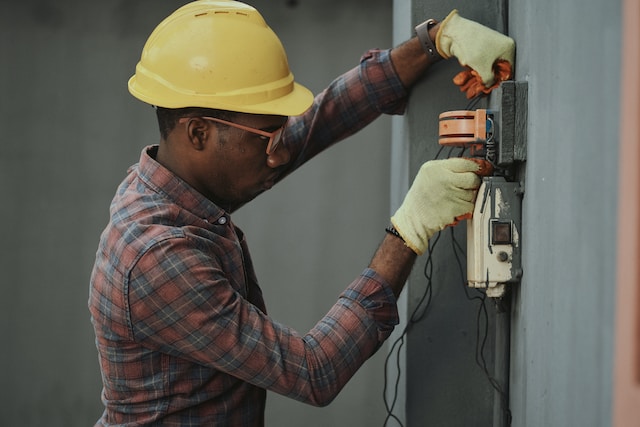Electric forklifts have increased in popularity in recent times due to rising fuel costs and a greater awareness about environmental problems. An electric forklift has many benefits over a conventional one, but if you do not care for it, your savings can quickly evaporate.
For instance, did you know that with proper care you can increase the life of your battery by over 40%? It will also decrease your expenses, improve battery safety and maintain the forklift’s performance.
The battery on your electric forklift can constitute up to 30% of the cost of the vehicle. On average, it can serve you for 6000 hours. But, to get this benefit, you will have to take care of it accordingly. Here are a few steps you can take to increase the life of the battery on your electric forklift:
1) Do not let the battery go below 20%
It is recommended that you recharge the battery when it discharges 80% (in most batteries, it is when the discharge meter reaches the red zone) of its charge. Do not let it go below this. Deep discharging is not good for the battery. At this point, the electrical components on the forklift will be running hot. Over time, this will result in significant truck damage, including burned components and motor failure.
Moreover, at that level (80% discharge), the truck’s performance will diminish. The hydraulics and traction will slow down. Whenever possible, give the battery a full, uninterrupted charge.
2) Do not charge during the lunch break
Many forklift operators have gotten into the habit of giving a quick charge to the battery during the lunch break or other break times. In the industry, this is called opportunity charging. The lifespan of the battery is determined by how many charge cycles it has undergone. When you charge it for a short while, you will have to do so more frequently. Over time, this habit will decrease the battery’s efficiency and there will come a point when the battery will not charge at all.
3) Check the water level in the battery
Water plays a very important role in maintaining the health of the battery. During a cycle, the water gets heated up and splits into its components- hydrogen and oxygen. Hydrogen gets discharged at the negative plate and oxygen at the positive one. With time, the water level will come down. When this happens, the plates are exposed to air. The active material on the plates will become dry and brittle, causing permanent damage. So check the water level regularly and keep adding distilled water whenever you notice that the water level has come down, but do not overfill the battery.
4) Fast charge at your own risk
Charging the forklift battery quickly will reduce downtime, but there is a price. The excessive heat generated can reduce the battery life. We are not saying that you should never fast charge, only that you reserve it for emergencies.
5) Maintain Your Battery
One of the main reasons why forklift batteries fail before their time is sulphonation. This is a natural process- white sulfuric acid crystals get attached to the lead plates and diminish its capacity to accept a charge and hold it. If you notice white crystals on the lead plates, call in a battery engineer immediately.
If you want to know the efficiency of your battery, you can use a tool called the electronic battery tester. The tester will take your battery through a full cycle. Later it will tell you how the battery performed in the cycle. It may not be feasible to buy a tester, but people in the battery business usually keep one. You can ask them to test your battery for a small fee.
When the efficiency of your electric forklift battery goes down (the forklift is not working as it used to) you can get it refurbished. But, if you have been using it a few years, perhaps it is best to get it replaced. Use these tips to enhance your battery’s life, reduce costs, and maintain a healthy performance in your workplace.






